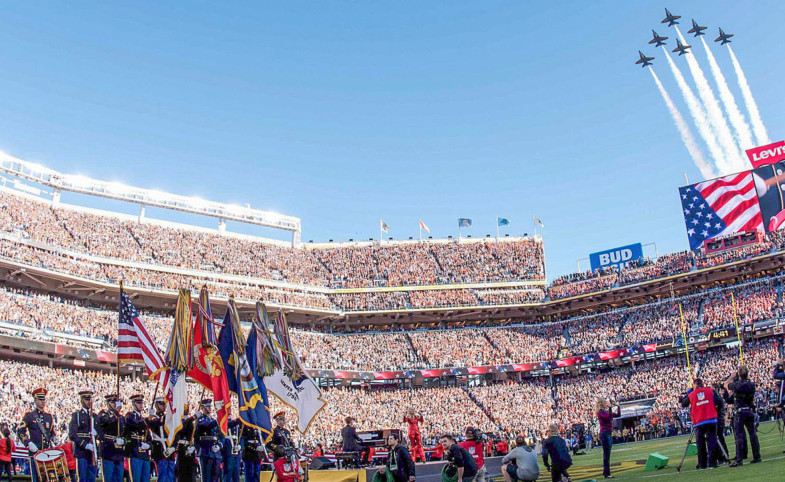The CPD Blog is intended to stimulate dialog among scholars and practitioners from around the world in the public diplomacy sphere. The opinions represented here are the authors' own and do not necessarily reflect CPD's views. For blogger guidelines, click here.

Bad Bunny and the NFL’s Pursuit of Global Fandom
Bad Bunny headlining the 2026 Super Bowl halftime show isn’t just about star power. It’s about public diplomacy. Choosing Bad Bunny signals not only an effort to reach new audiences but also a recognition of just how powerful and passionate the Latin American fanbase has become.
The selection didn’t happen in isolation. It’s part of a broader trend. In 2024, the National Football League (NFL) made its debut in South America, hosting the 2024 season opener in São Paulo, Brazil (a topic I covered for the CPD Blog in March). In 2026, the NFL will return to Mexico, which in 2005, became the first country to ever host a regular season game outside of the United States. Commissioner Roger Goodell announced that once the renovations at Mexico City’s Estadio Banorte, formerly known as Azteca Stadium, in preparation of the 2026 FIFA World Cup are complete, the stadium will also serve as the official home to American football in Mexico.
International expansion and an increased fanbase are at the forefront of the League’s long-term planning, with “a record-high seven games internationally this season” alone. Ahead of the 2028 Olympics, the NFL will introduce flag football for both women and men—a move that could widen its player-pool and fan base—and develop its presence in Asia. Penetrating foreign markets while broadening game play opportunities allows the NFL to both maintain relevance domestically, and establish itself abroad.
The exponential growth of international developments not only demonstrates the NFL’s ambition—under Goodell’s leadership—to capture a significant number of new markets, but also underscores the league’s effort to engage an expanding Latin American fanbase.
Enter Bad Bunny. The Puerto Rican musical multi-hyphenate has skyrocketed to stardom over the last decade. Originally sharing music via SoundCloud and later hopping on high profile collabs as a feature artist, today Bad Bunny has grown to become a household name with over 80 million monthly listeners on Spotify alone. “DeBÍ TiRAR MáS FOToS World Tour,” Bad Bunny’s sixth concert tour, is shaping up to be his largest thus far, with over 2.6 million tickets already sold. As his tour shatters previous records set, Bad Bunny is breaking into various markets previously untapped by Latin American artists, including Australia (his tour is the first of its genre to sell out an Australian stadium) and Japan, among many others.
"The NFL’s welcoming of Bad Bunny this year, and more broadly multilingualism and Latin American artists in the recent past, is a carefully calculated bargain meant to advance their exportation of the sport abroad."
His meteoric rise—and unparalleled resonance with Latin American and global audiences—made him an obvious choice for the Super Bowl halftime stage, or at least Jay-Z thought so. Since 2019, the rapper, producer, and record executive, under company Roc Nation, has been the producer of the NFL Super Bowl halftime show, responsible for the choice of a performing artist each year. Thus far, Jay-Z’s track record has proven successful. Over the past four halftime performances, viewership has steadily grown, with last year’s Kendrick Lamar performance picking up a 3% increase overall. In fact, five time Super Bowl producer Jesse Collins credits Jay-Z with having “always picked right” and each year, the event is purportedly deemed by various news agencies and media networks as “cool again.”
However, Jay-Z’s selection of Bad Bunny has not been without controversy. President Trump dismissed the Super Bowl choice as “absolutely ridiculous,” admitting he had “never heard of [Bad Bunny].” Homeland Security Chief Kristi Noem went further, declaring that ICE would maintain a presence at the event—a move that seemed both performative and misinformed, given that Bad Bunny’s country of origin, Puerto Rico, is in fact part of the United States. The backlash from conservative circles grew so intense that Turning Point USA announced plans to stage its own alternative halftime show in protest.
But the NFL must have done the math, and decided that a little controversy was worth the payoff. The intention in accepting Jay-Z and Roc Nation’s selection of Bad Bunny as the 2026 Super Bowl halftime performer was not meant to serve as a political statement or voice against President Trump’s immigration policy. Rather, as with any entertainment corporation, the NFL is looking to increase global fandom and thus profit margins.
While Jay-Z may choose halftime performers based on personal preference and aesthetic choice (a power afforded to him by the partnership between Roc Nation and the NFL) the NFL’s welcoming of Bad Bunny this year, and more broadly multilingualism and Latin American artists in the recent past, is a carefully calculated bargain meant to advance their exportation of the sport abroad. Unless the 2026 halftime show viewership sharply declines as a result of widespread anti Bad Bunny protest, the NFL continues to bargain correctly.
Visit CPD's Online Library
Explore CPD's vast online database featuring the latest books, articles, speeches and information on international organizations dedicated to public diplomacy.
POPULAR ARTICLES
-
November 3
-
November 5
-
November 13
-
October 16
-
October 16
Join the Conversation
Interested in contributing to the CPD Blog? We welcome your posts. Read our guidelines and find out how you can submit blogs and photo essays >.









